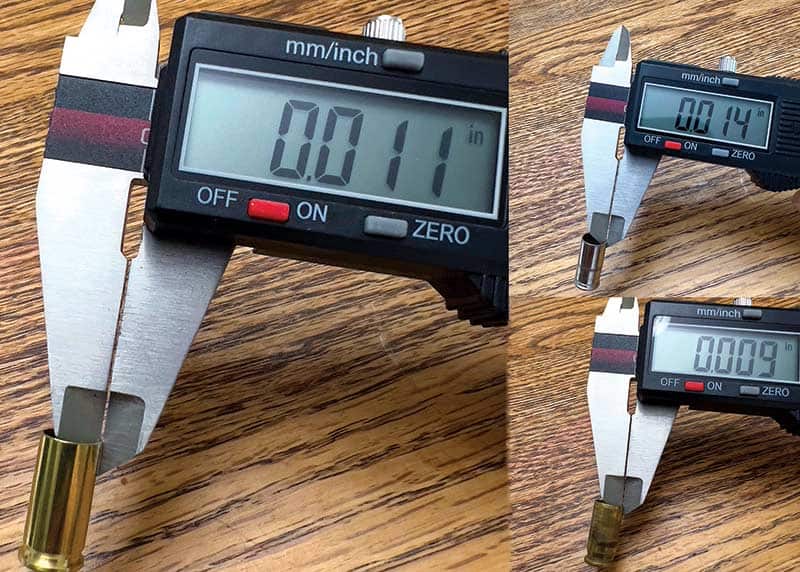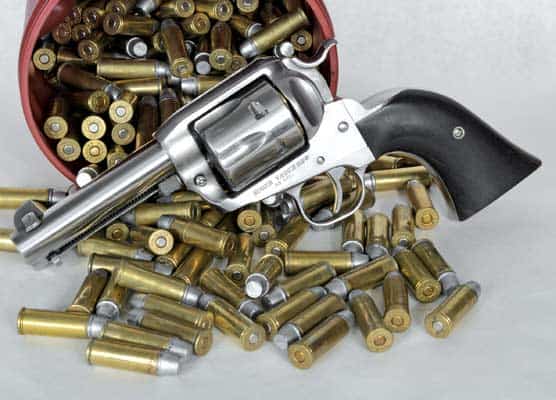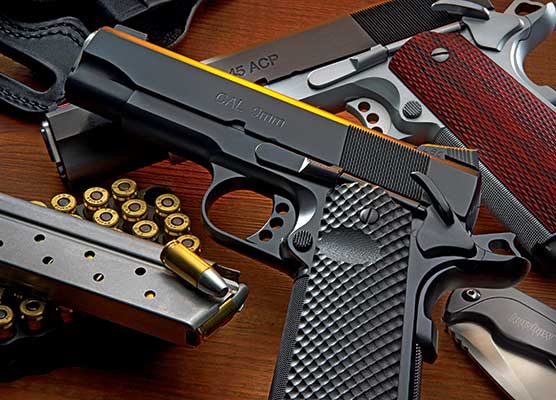Mastering the Finicky .32 ACP
The 32 Auto cartridge has been around since 1899 as the 7.65 x 17mm Browning, or sometimes the 7.65 Browning Short. It was a resounding success in Europe, and, at one point in time, it was the most popular handgun cartridge on earth.
A Finicky Reload
The reason .32 ACP is hard to reload is there are two standards: U.S. (SAAMI) and International CIP, and the specs don’t entirely match. For example, CIP (Commission Internationale Permanente) lists 7.65 Browning max pressure as 1,600 bar (23,000 PSI). SAAMI lists the max pressure at 20,500. This is a huge difference, so stay on the lower end of the scale for reloading recipes. Dimensions are different as well.
The first time I reloaded .32 ACP, I was frustrated. On some sized brass, the bullets fell inside the case; I couldn’t reload them. Others would reload normally, but the cartridges would not chamber. It didn’t take long to figure out the case wall thickness varies across manufacturers. Generally, European brass is thicker, and (mostly) the bullets loaded into these are smaller. One of the “store bought” cartridges I had used brass that was 0.014″ thick and fired 0.309″ bullets.
The .32 ACP chambers and bore diameters vary by manufacturer, from 0.309″ to 0.314″. Generally, the manufactured 71-grain bullets offered for reloading run 0.311″ to 0.312″. Some European cartridges use 0.309″ bullets. SAAMI specifies 0.312″, and CIP specifies 7.85mm or 0.310″.
The consequences of incorrectly sized brass and bullets can range from being merely annoying — where the accuracy is diminished and lead accumulates — to dangerous, where oversized components create dangerous pressures.
Size Matters
Let’s remedy the first problem. Slug your barrel. Find a buddy who shoots black powder and ask for a couple of .32 lead balls. These are soft and measure 0.315″. Pull the barrel from your gun and push a lead ball into your chamber. Using a wood dowel, tap the ball with a light hammer through the barrel. When you pop that ball out, it will match the rifling of your gun. Measure the largest diameter. If you are using jacketed bullets, you should load approximately this size, or 0.001″ over. Use 0.001″ to 0.002″ over for lead bullets.
To match bullets and bore, you’ll need a bullet-sizing kit. There are some great sizing presses like the RCBS Lube-a-Matic; I use a Lee Precision Bullet Sizing Die Kit that fits on my press. When you size jacketed bullets, use a little sizing lube like Corbin Swage Lube.
Casting Your Own
Recently, I have been using Accurate’s 31-087T mold, which throws at 80 grains in linotype. It has such a slow taper from base to the nose (0.312″ to 0.300″ in 0.35″), that it looks like a .32 caliber fist. It flies like one too. If you want a more conventional-looking nose, I have heard that the Accurate 31-077B is a good choice.
I loaded the 31-087T bullets over 1.5 grains of HP-38. I used new Starline brass and Winchester SP Primers. The COL was 0.945″. With the slow taper of these bullets, COAL is important. These bullets almost touch the rifling in my Tomcat.
Another molded bullet that worked well for me was the Lyman 313249. This is also an 80-grain bullet that poured at 0.312″ without any sizing. I used 2.0 grains of Unique and new Starline brass. Both the Accurate and Lyman molds produced groups under 1″ at 7 yards offhand.
Big Brass? Little Bullets?
The outside diameter for standard .32 ACP brass is 0.329″ when sized. You can purchase a Lee Precision Undersized Sizing Die, which sizes at 0.326″. This will prevent the fall-through problem, but be very careful to ensure the case mouth expansion is completely concentric to prevent crooked bullet bulges when seating.
If bullets are too large for your brass, stop your process and start measuring, especially if you are roll-crimping. Since .32 ACP arguably headspaces on the rim, some reloaders get more consistency with a roll crimp. Fatter bullets are going to require thinner case mouths. It is not a good idea to tighten your crimp just to get the bullet to load or the cartridge to chamber.
The important concept here is to sort the brass before reloading. I have several buckets of brass, sorted by headstamp.
The Right Press Helps
I use a Frankford Arsenal M-Press Coaxial Reloading Press for .32 ACP Reloading. The M-Press doesn’t use a conventional shell holder, so you don’t need to get a tiny case into a tiny hole. With the M-Press, one only needs to set the case down on the plate and the press automatically grabs it.
The M-Press also uses a floating die system, which does the alignment of the case into the die automatically — a game changer for .32 ACP.







